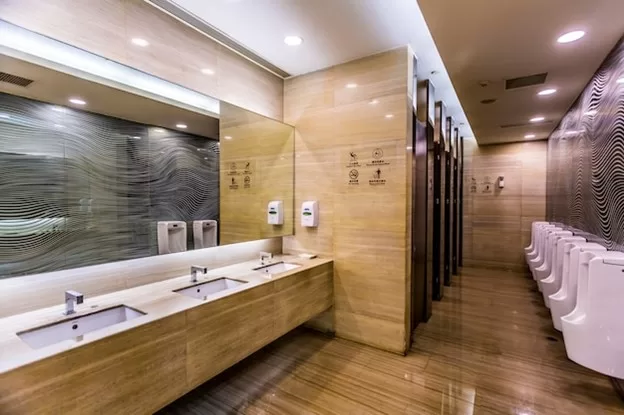Creating accessible washrooms in commercial spaces is an essential aspect of modern building design. By adhering to the Americans with Disabilities Act (ADA) standards, businesses ensure that their facilities are inclusive for all, including individuals with disabilities. One key element in this process is implementing proper ADA bathroom layouts that meet the specific requirements set forth by the ADA.
This article explores how these standards help transform commercial washrooms into spaces that everyone can use with ease and dignity.
How ADA Standards Help Commercial Washrooms Become Available to All
One of the cornerstones of Americans with Disabilities Act (ADA) standards is the requirement that bathrooms must include certain accessible features. These include large stall dimensions allowing wheelchair users access and accessible stalls that are 60 inches wide and 56 inches deep for floor-mounted toilets.
Also, grab bars should be installed to provide the necessary mobility support for persons with disabilities, improving safety and usability. The clear floor space is also essential, which shall be at least 30 inches by 48 inches in front of the toilet, sink, and other fixtures for freedom of movement.
Height and Reach Requirements
The ADA dictates height and reach requirements so that all users may comfortably use the washroom fixtures. Sinks and countertops, for example, shall not be higher than 34 inches from the floor to ensure they can be reached by wheelchair users. Soap dispensers and hand dryers are similarly required to be installed within reachable limits of 48 inches to ensure ease in usage by all users. These height requirements are one of the most basic ways to make an environment functional and user-friendly.
Accessible Pathways and Signage
The important features of ADA standards in commercial washrooms include clear paths and signage. For instance, the doorways to commercial washrooms must be at least 32 inches wide to accommodate persons using mobility services with ease of access. Complementing physical access, signage is also an important mode in ensuring movement through and within the washroom facilities smoothly. Clear, Braille, and tactile signs will provide ease to persons with visual impairments in determining the location of accessible stalls and features.
Flooring and Surface Considerations
Choosing the right flooring materials is essential for maintaining accessibility in commercial washrooms. Non-slip surfaces are necessary to provide good traction and prevent slips and falls, which can pose significant risks for individuals with mobility impairments. Additionally, smooth transitions between different surface levels are critical, as abrupt changes can create hazards for users who may have difficulty navigating uneven surfaces.
Maintenance and Cleanliness
Ensuring accessibility goes beyond design; it requires ongoing maintenance and attention to cleanliness. Regular checks are essential to ensure that grab bars, accessible stalls, and other features remain in good working order. Facilities should also provide accessible means for users to maintain personal hygiene, such as easily reachable sinks and sanitary disposal options. A commitment to upkeep helps to create a safe and welcoming environment for all users.
Encouraging Inclusivity
By adhering to ADA standards, businesses signal their commitment to inclusivity. An accessible washroom not only meets legal requirements but also enhances the overall customer experience. By prioritizing accessibility, companies can foster a sense of belonging among all patrons, regardless of their physical abilities. Additionally, businesses that focus on creating inclusive spaces often enjoy a positive brand image, attracting a broader customer base and demonstrating their dedication to social responsibility.
The implementation of ADA standards in commercial washrooms is a significant advancement toward ensuring that all individuals, regardless of physical abilities, can access and utilize these essential facilities. By prioritizing accessibility, businesses not only fulfill legal obligations but also cultivate an inclusive environment that values diversity and equality. As awareness of accessibility issues continues to grow, the ongoing commitment to ADA standards will be crucial in creating welcoming spaces for everyone.

